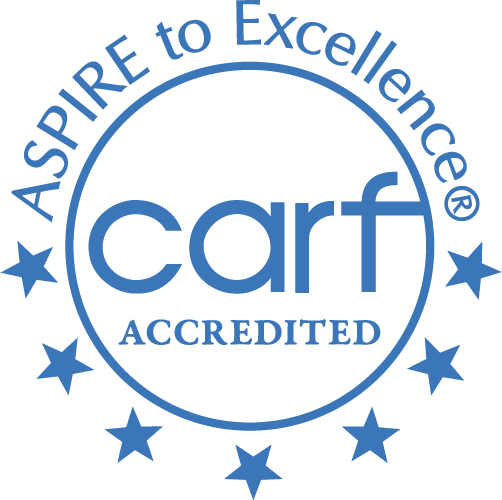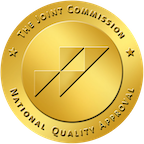Skip To Rehab Listing
Drug and Alcohol Rehab Facility Settings and Approaches
The large number of those who struggle with alcohol and drug addiction in the Paxton area necessitate the presence of a variety of treatment programs, where clients can get the services they need in a suitable setting. These programs include the following: long term drug treatment, short term addiction treatment programs, inpatient detox facilities, outpatient substance abuse treatment services, inpatient drug rehab facilities.
These treatment programs facilites provide a number of different modalities to addiction rehab, allowing clients to find an approach that gets results for them. People seeking treatment can find any of the rehabilitation approaches available in Paxton like: brief intervention approach, rational emotive behavioral therapy, couple/family therapy, anger management, trauma-related counseling, activity therapy.
Special Programs for Substance Abuse Recovery
In order to achieve sustainable sobriety, those struggling with alcohol and drug abuse sometimes require customized programs created for their specific circumstances. Paxton treatment facilities offer many services such as: domestic violence, active duty military, self-help groups, seniors or older adults, clients with HIV/AIDS, substance abuse education.
Patients can inquire about a center's services and methods and get guidance in finding the best treatment for their needs.
Rehab Payment Options
Alcohol and drug treatment programs also customize their payment options to suit the different economic needs of their patients. In general, clients have several payment options for their treatment, including the following: private health insurance, private pay, military insurance, sliding fee scale, county or local government funds, state corrections or juvenile justice funds.
Individuals looking for rehab should not allow money to be a barrier. Treatment facilities can guide them through their payment options and help them find an affordable solution.
Thanks to Paxton's many alternatives for drug and alcohol rehab and financing, people looking for support can get a convenient, customized, and affordable recovery program.
Commonly Asked Questions about Addiction and Treatment
Suicide risks from drug abuse among lgbtq+ youth
Substance abuse significantly increases the risk of suicide, particularly among vulnerable populations such as LGBTQ+ (lesbian, gay, bisexual, transgender, queer, and others) youth. This heightened risk stems from a combination of factors associated with both substance abuse and the unique challenges faced by LGBTQ+ youth. Here's a closer look at these factors:
Mental Health Disorders: Substance abuse often co-occurs with mental health disorders such as depression, anxiety, and bipolar disorder, which are known risk factors for suicide. LGBTQ+ youth experience these mental health conditions at higher rates than their heterosexual and cisgender peers, partially due to the minority stress they face.
Minority Stress: Minority stress refers to the chronic stress experienced by marginalized groups, including LGBTQ+ individuals. It can include experiences such as discrimination, stigma, bullying, and family rejection, which can increase feelings of hopelessness and contribute to both substance use and suicidal ideation.
Substance Use and Suicidal Behavior: Substance use can lead to increased impulsivity, decreased inhibition, and intensified feelings of despair, making a person more likely to attempt suicide. It can also exacerbate feelings of isolation and hopelessness, further increasing the risk.
Social Isolation: Many LGBTQ+ youth feel socially isolated, either because they are not out to their peers or because they face rejection after coming out. This isolation can lead to increased substance use and a higher risk of suicide.
Family Rejection: Family rejection related to an individual's sexual orientation or gender identity can lead to increased substance use and heightened suicide risk. LGBTQ+ youth who do not receive support from their families are particularly vulnerable.
Lack of Access to Mental Health Services: Many LGBTQ+ youth struggle to access mental health and substance use treatment services, which can help manage risk factors for suicide. Barriers to access can include lack of insurance, stigma, and a shortage of providers who offer LGBTQ+-inclusive care.
Intersectionality: LGBTQ+ youth who belong to other marginalized groups (e.g., racial/ethnic minorities) often face additional layers of discrimination and stress, which can further increase their risk of substance abuse and suicide.
Efforts to prevent suicide among LGBTQ+ youth include providing access to culturally competent mental health and substance use treatment, fostering supportive environments in schools and communities, and advocating for policies that protect LGBTQ+ youth from discrimination and harassment. It's also crucial to provide support for families of LGBTQ+ youth, as family acceptance has been shown to protect against suicide risk.
Why are lgbtq+ individuals at higher risk for drug and alcohol abuse?
LGBTQ+ (lesbian, gay, bisexual, transgender, queer, and others) individuals are indeed at a higher risk for drug and alcohol abuse due to a variety of factors that often intersect and compound over time. These factors primarily relate to the stress and challenges associated with living as a marginalized group in many societies. Here are some of the main factors:
Minority Stress: This term refers to the chronic stress faced by individuals belonging to a stigmatized minority group. For LGBTQ+ individuals, this can stem from societal prejudice, discrimination, and violence related to their sexual orientation or gender identity. Such stressors can contribute to increased substance use as a coping mechanism.
Stigma and Discrimination: Experiences of rejection, exclusion, and maltreatment can increase feelings of anxiety and depression, which are associated with higher substance use rates. This can occur in various settings, including workplaces, schools, and even within families and social networks.
Internalized Negative Self-Perceptions: LGBTQ+ individuals may internalize societal biases and develop negative self-perceptions about their identity, leading to feelings of guilt, shame, and low self-esteem. These feelings can contribute to the misuse of substances as a form of self-medication.
Lack of Inclusive Healthcare: Many healthcare systems lack the resources or training to provide culturally competent care to LGBTQ+ individuals. This can make it difficult for these individuals to seek help or access effective treatment for substance use disorders.
Social Isolation: Feelings of isolation, which can be the result of rejection or non-acceptance by family, friends, or society, can increase the risk of substance use and misuse.
Intersectional Identity Stressors: LGBTQ+ individuals who also belong to other marginalized groups (like racial or ethnic minorities) may face additional stressors that can increase the risk of substance abuse.
What will a rehab do to help me get through my withdrawal symptoms?
Rehabilitation centers use a combination of medical, psychological, and supportive care to help you manage and overcome withdrawal symptoms during the detoxification stage of recovery. Here's what you can expect:
Medical Supervision and Care: During withdrawal, you'll be under the constant care of medical professionals who monitor your vital signs and general health. This is crucial because withdrawal from certain substances can be life-threatening.
Medication-Assisted Treatment: Depending on the substance you're withdrawing from and the severity of your symptoms, the medical team may administer medications to alleviate discomfort and reduce cravings. For example, methadone or buprenorphine might be used for opioid withdrawal, while benzodiazepines might be used for alcohol withdrawal.
Psychological Support: Mental health professionals provide psychological support during withdrawal. This might include individual counseling, group therapy, or cognitive-behavioral techniques to help manage cravings and cope with the emotional stress of withdrawal.
Comfort Measures: Rehab centers often use comfort measures to help manage withdrawal symptoms. These might include a quiet and comfortable room to rest in, nutritional support, hydration, and complementary therapies such as acupuncture, massage, or yoga.
Preparation for Ongoing Treatment: Detox and withdrawal management are just the first steps in the recovery process. While helping you through withdrawal, staff at the rehab center will also be preparing you for the next phases of treatment, which may include therapy, medication management, and skill-building to maintain long-term sobriety.
Peer Support: Many rehab centers facilitate peer support groups, where you can share experiences and coping strategies with others who are going through a similar process.














